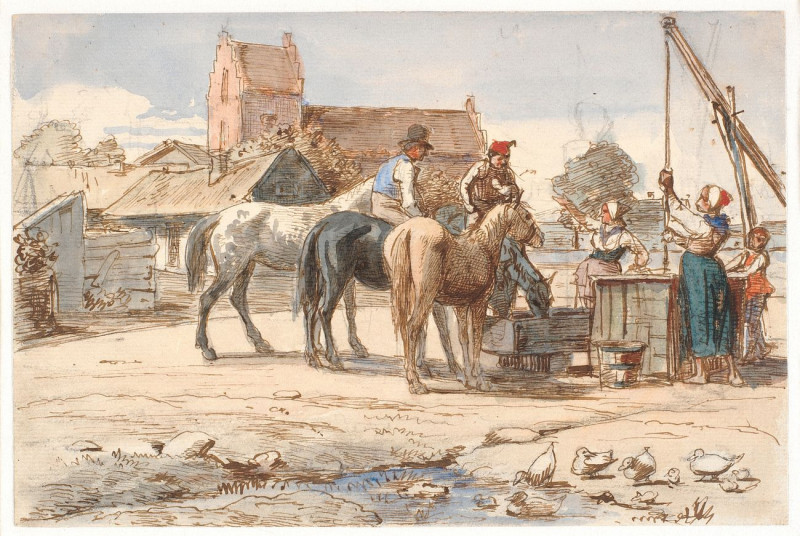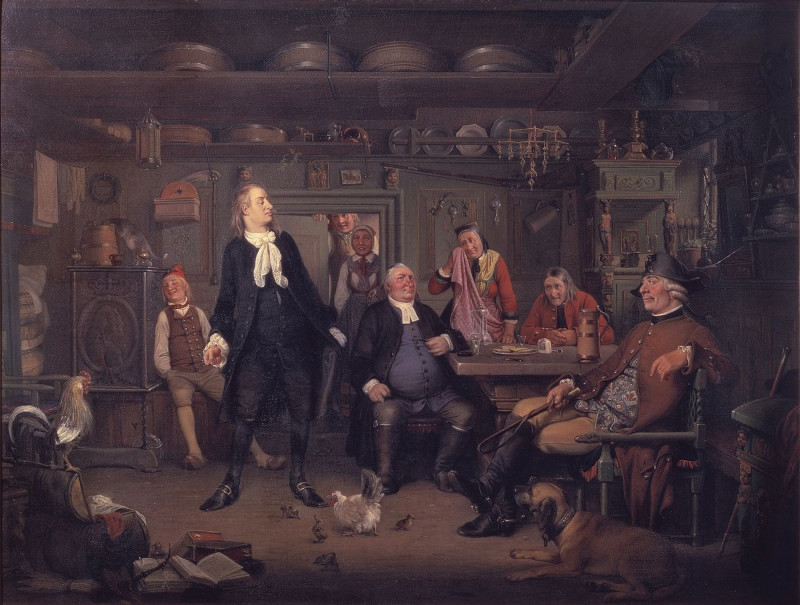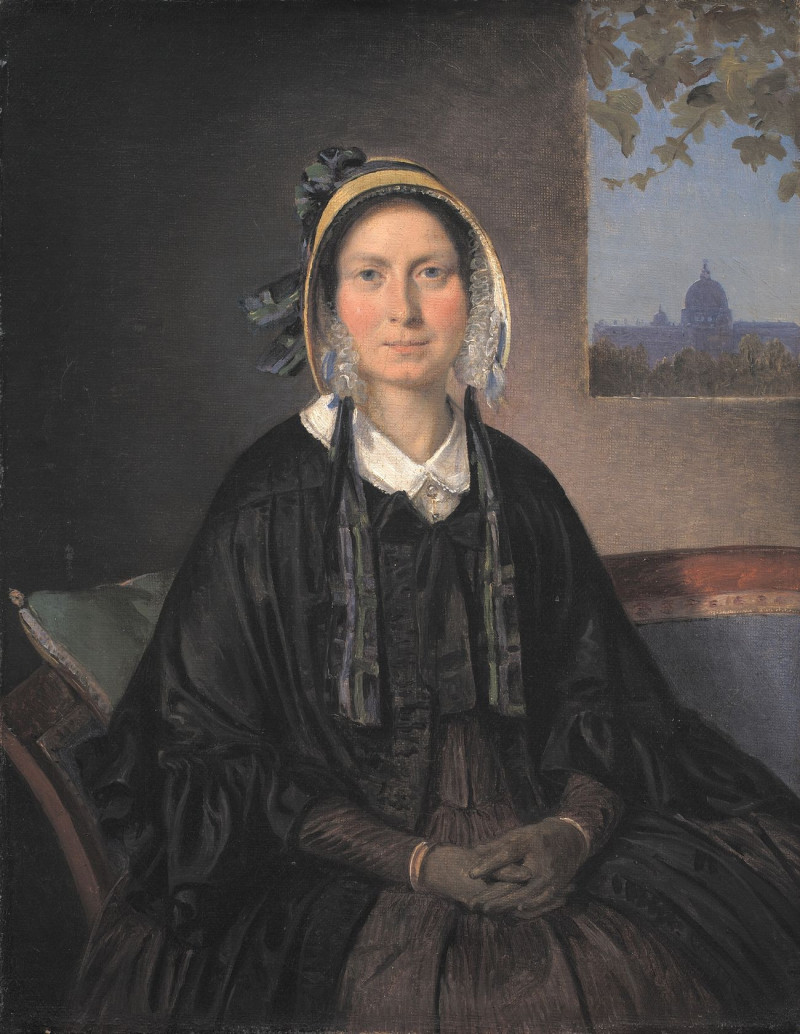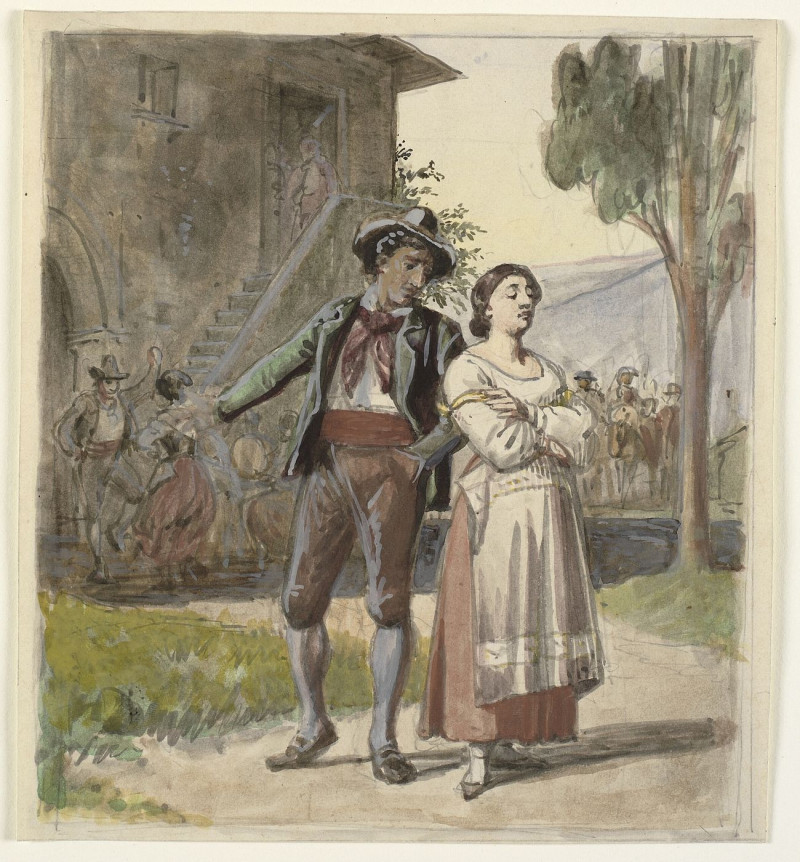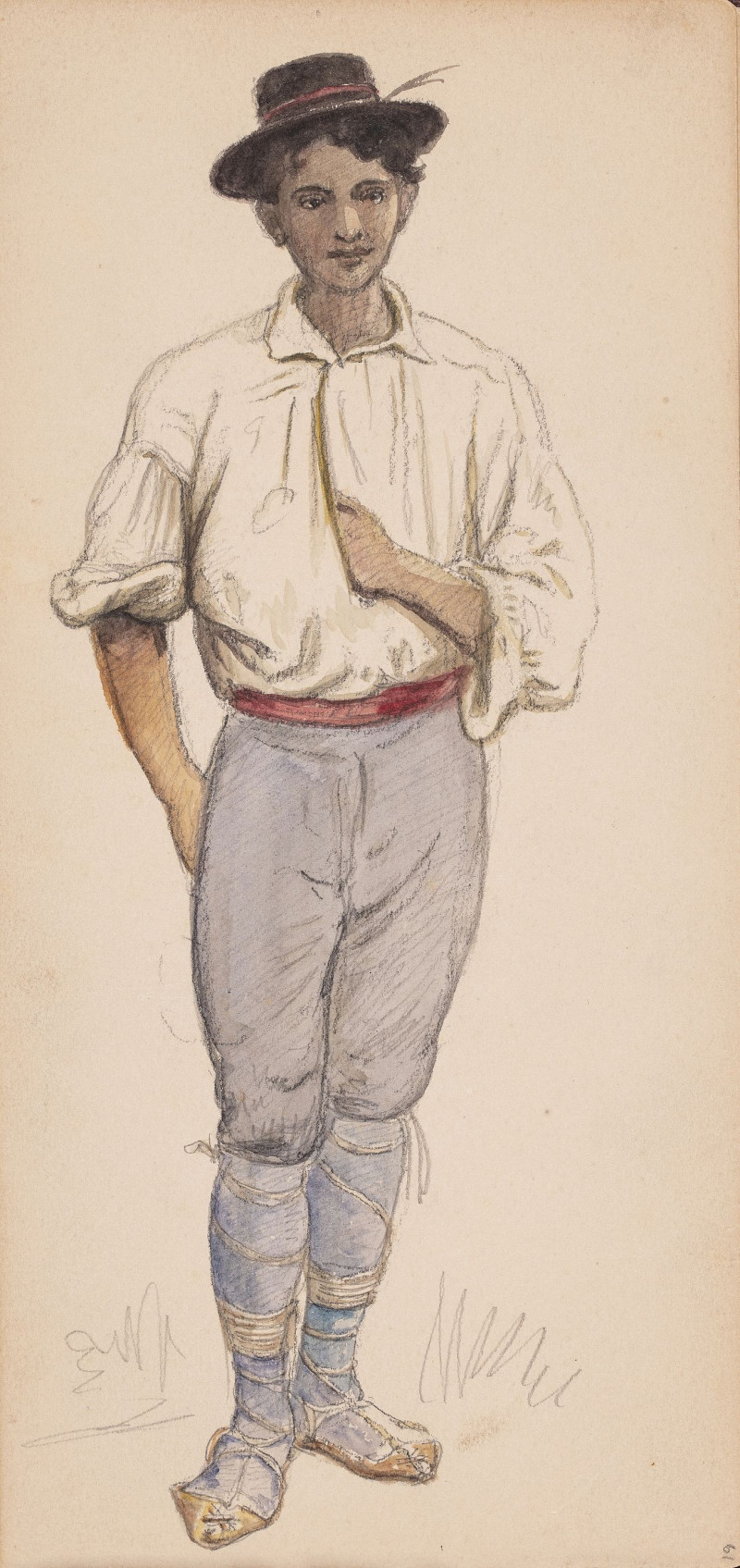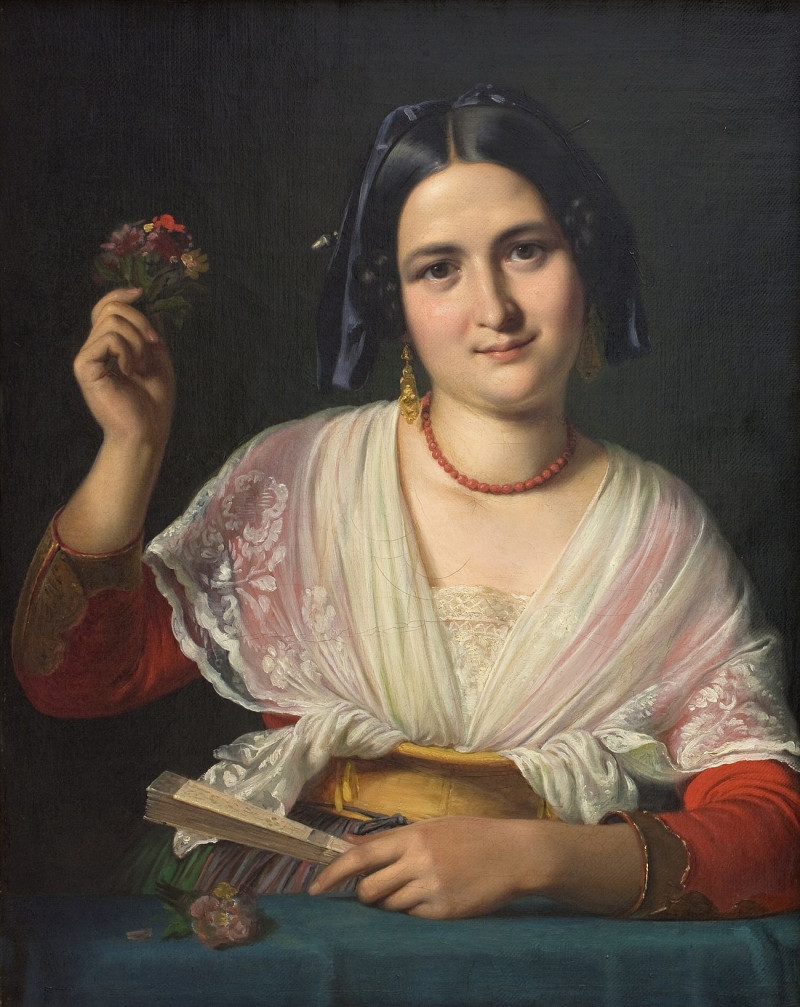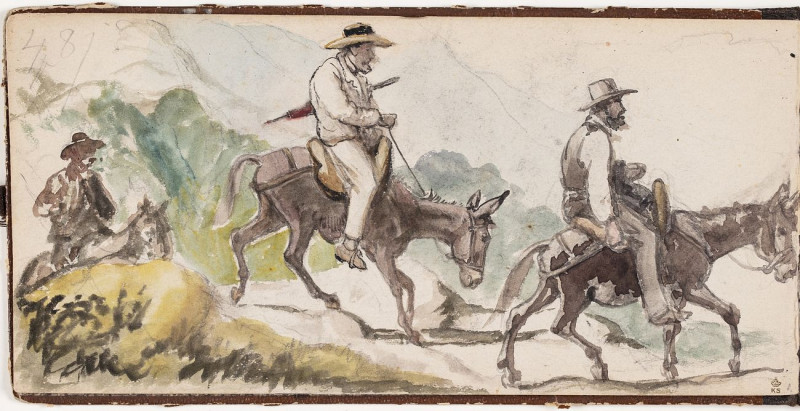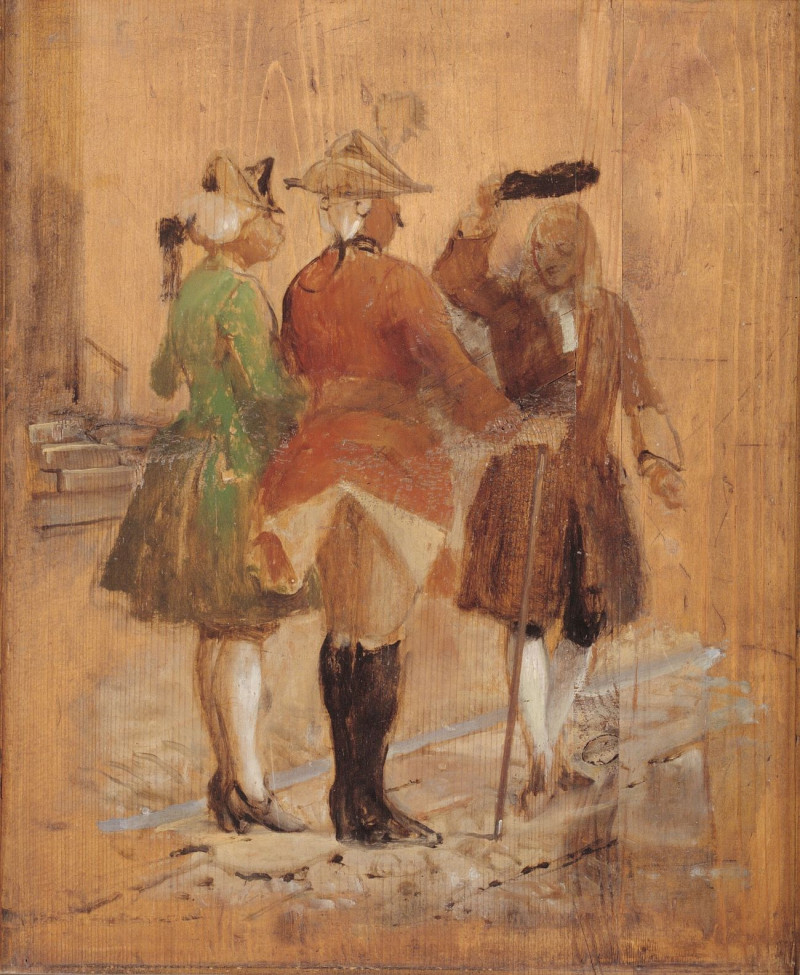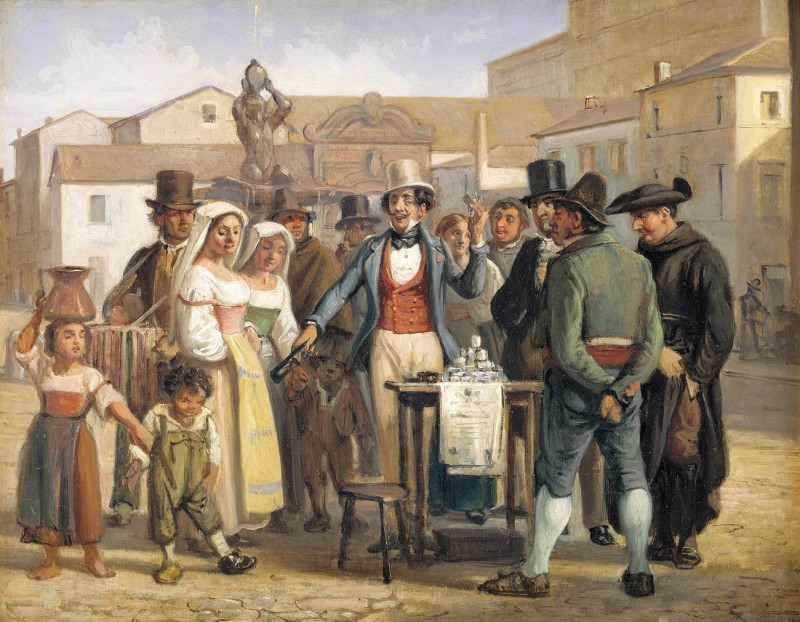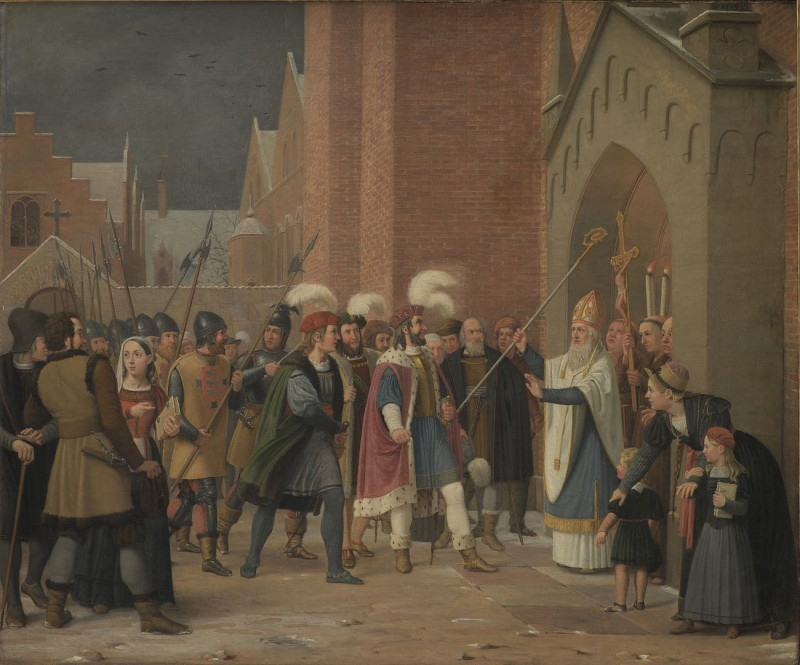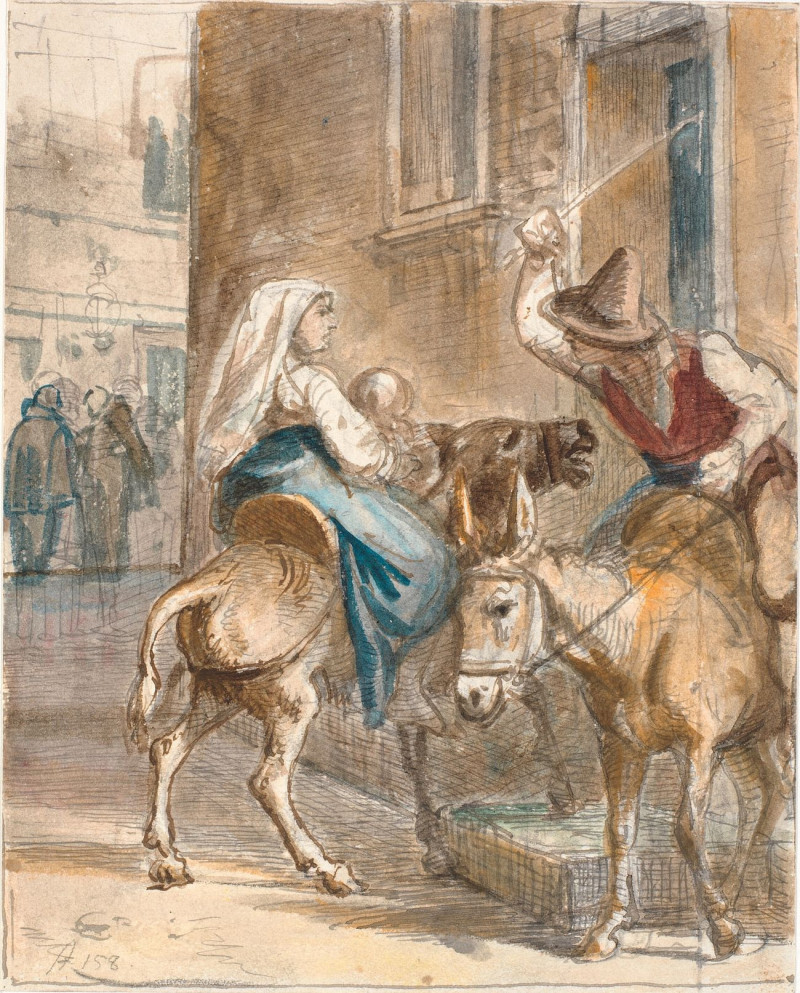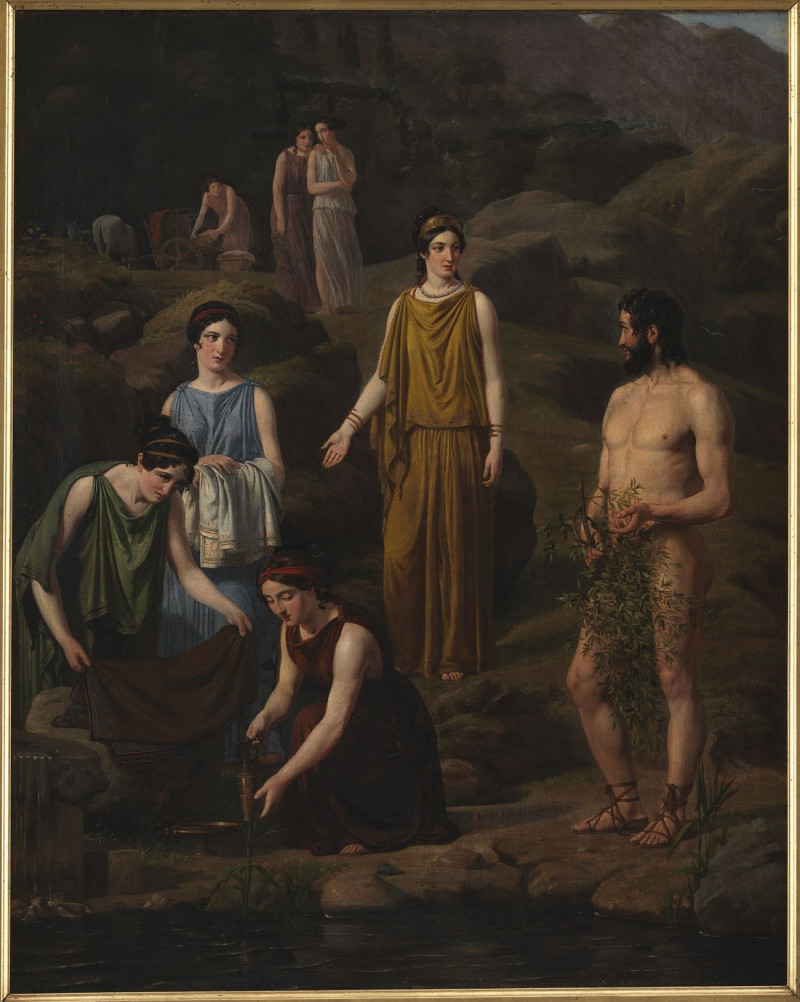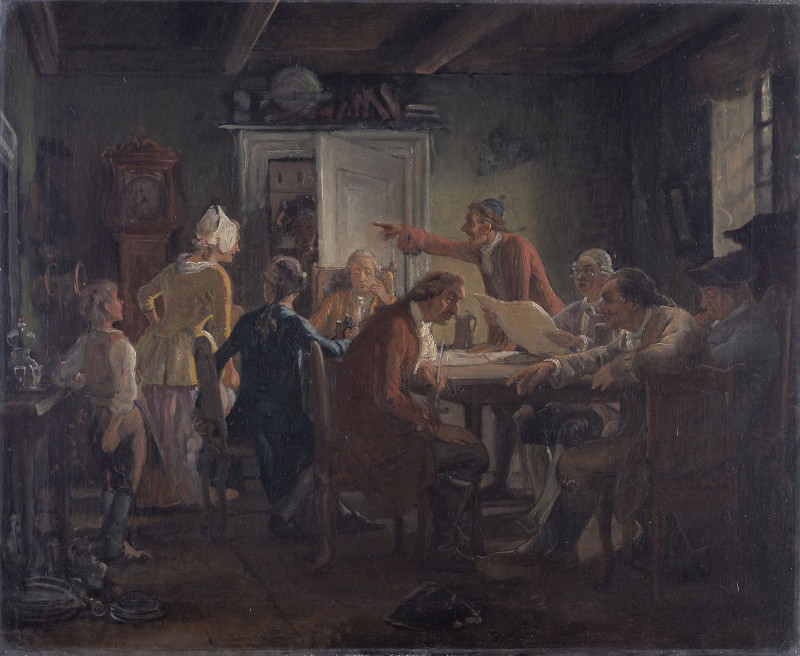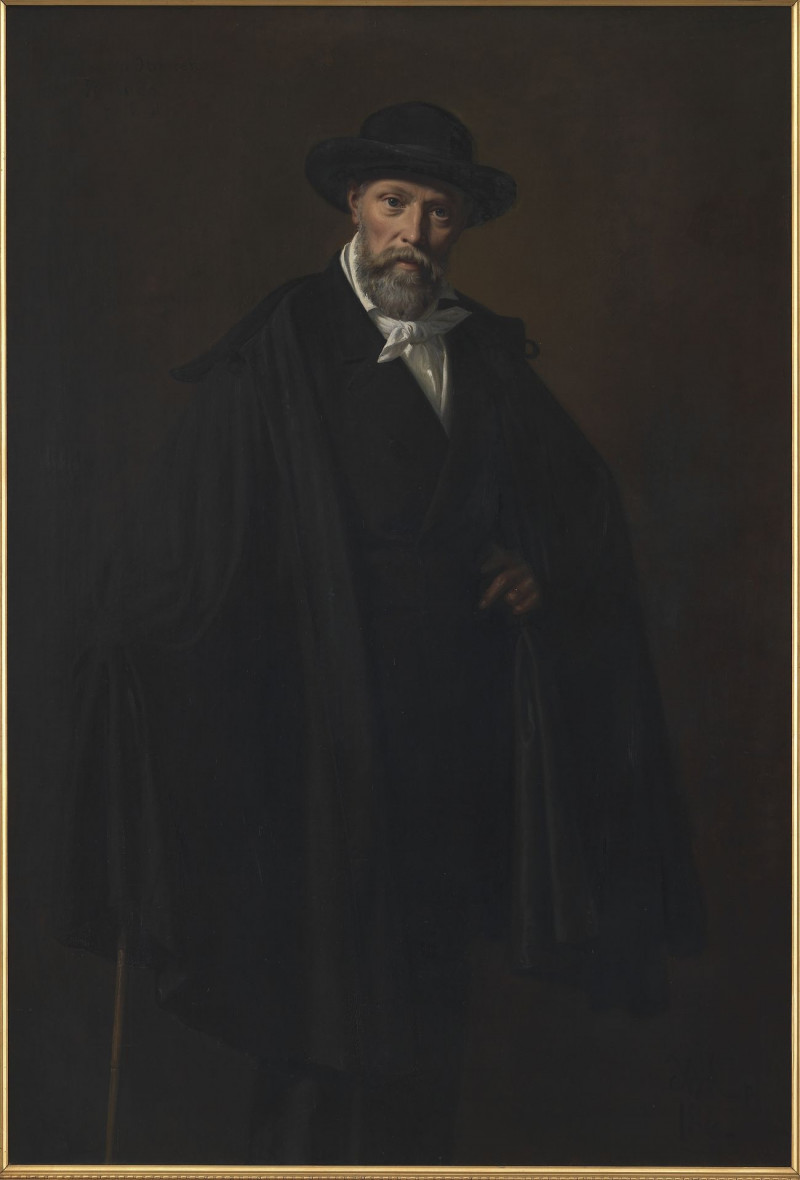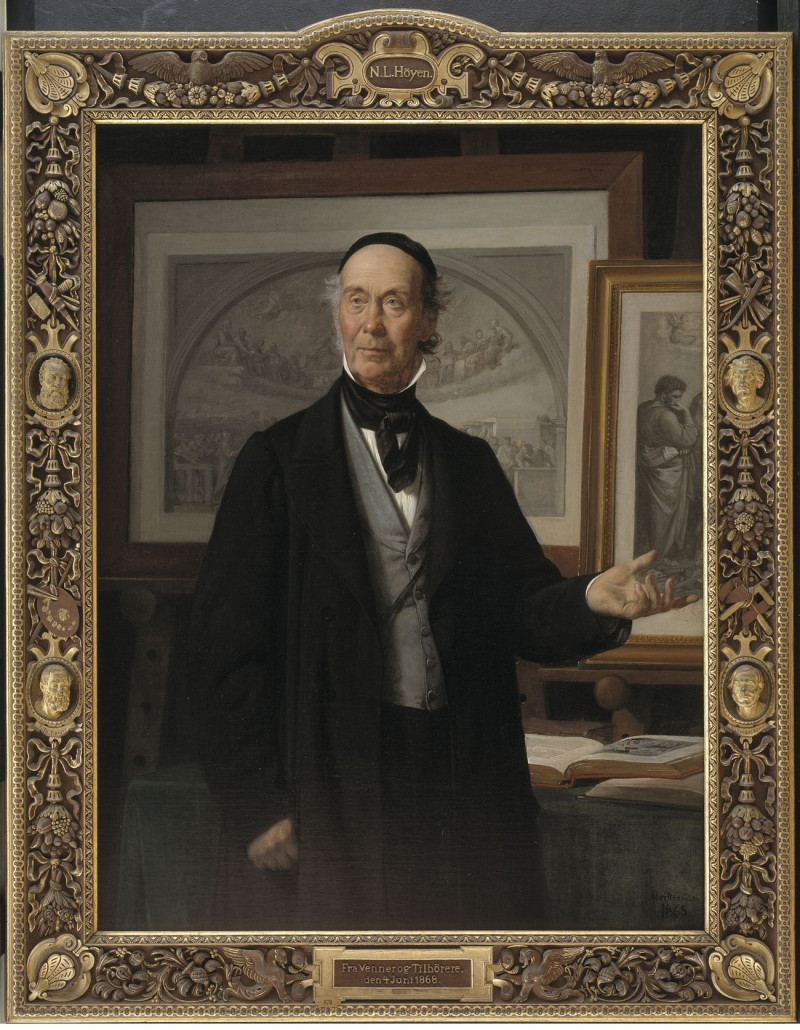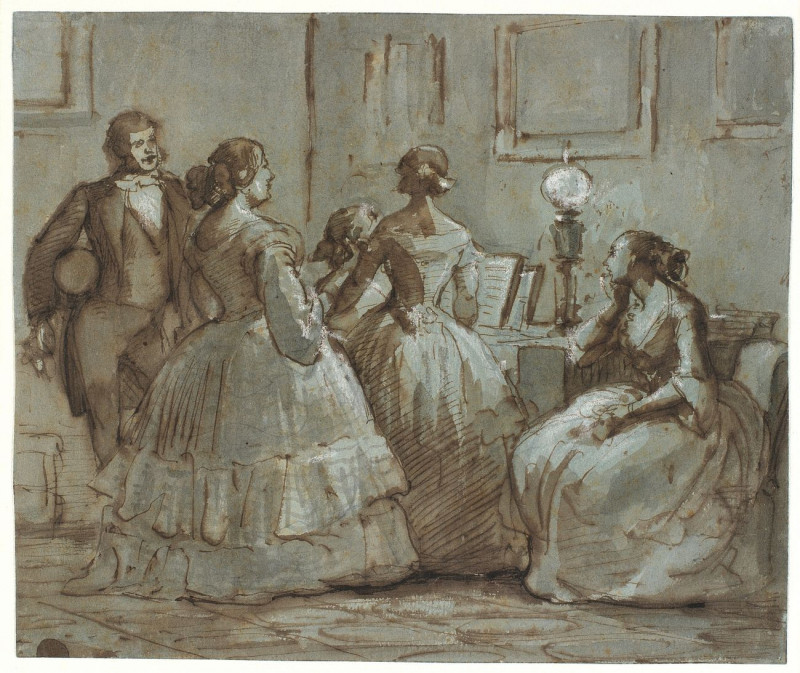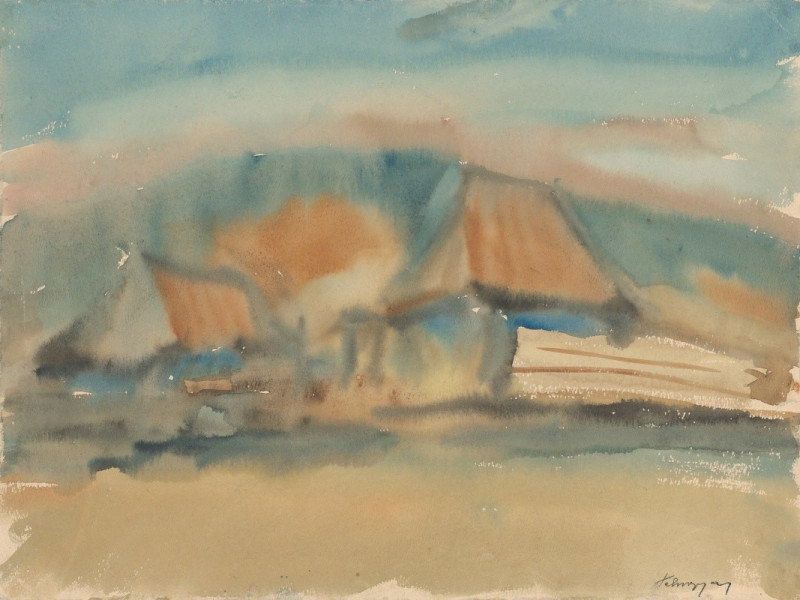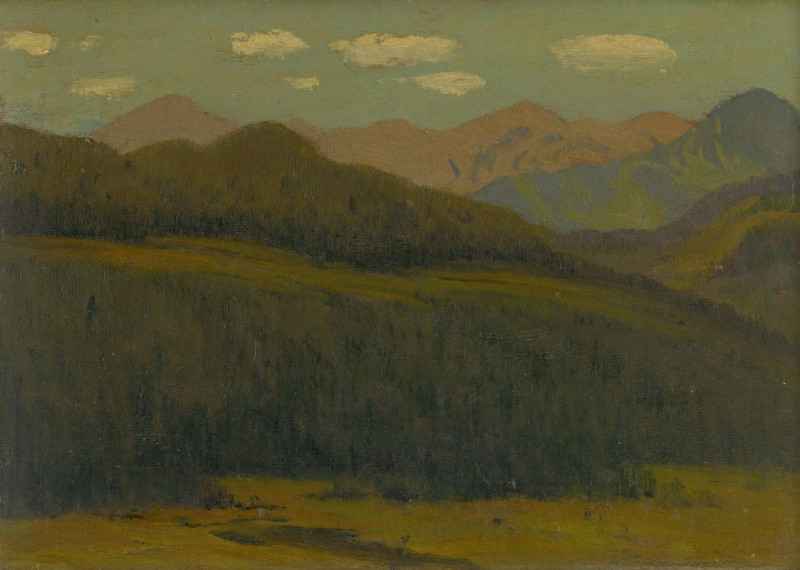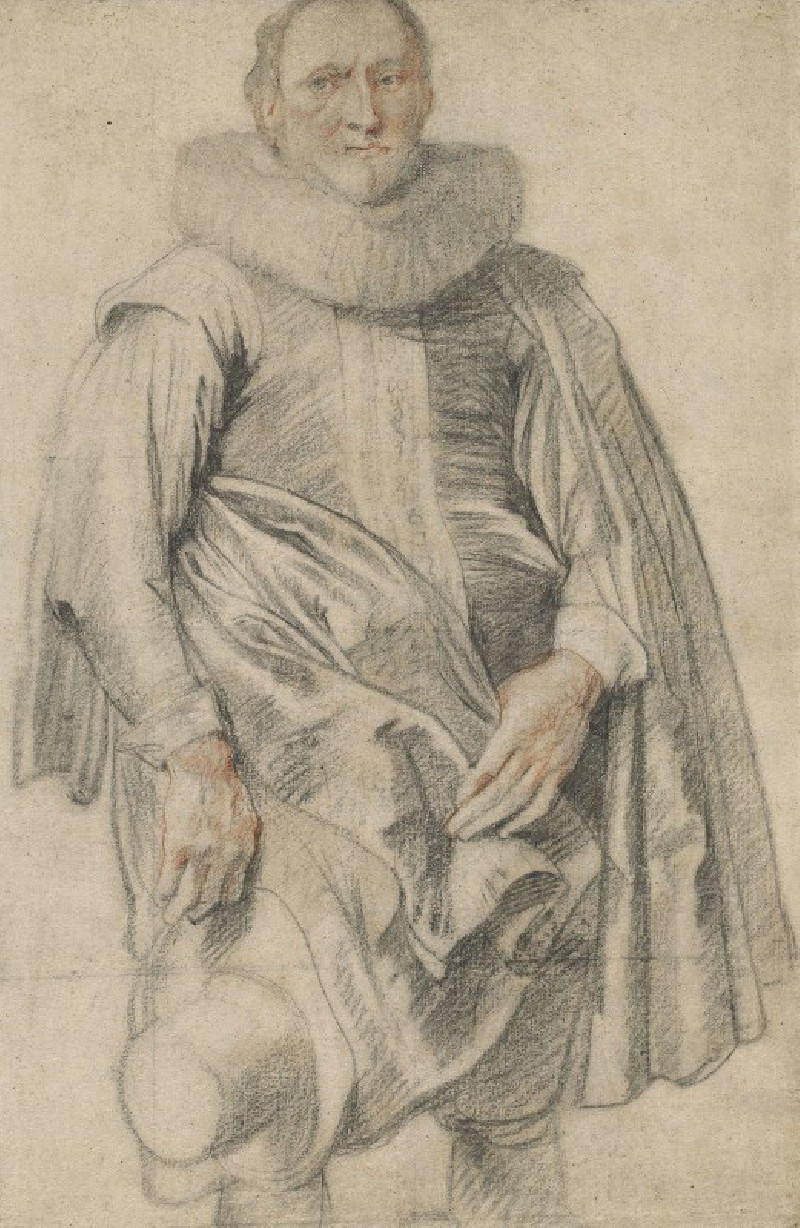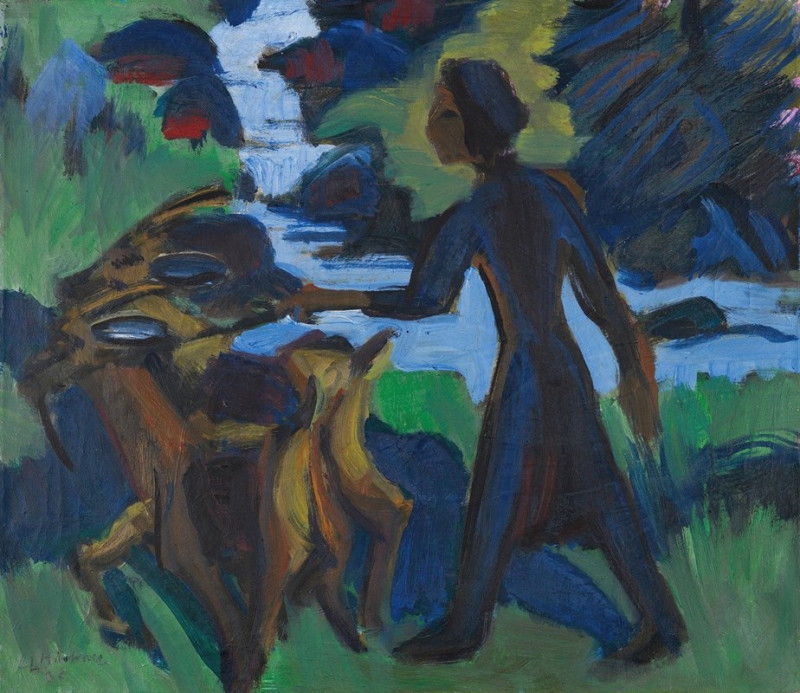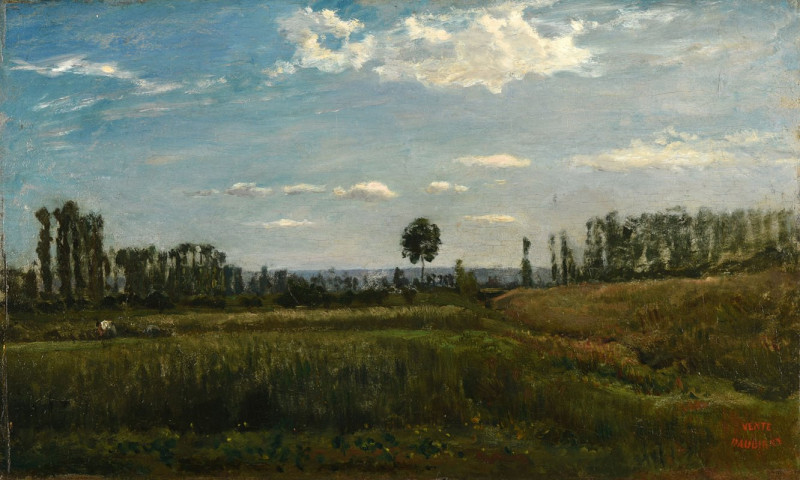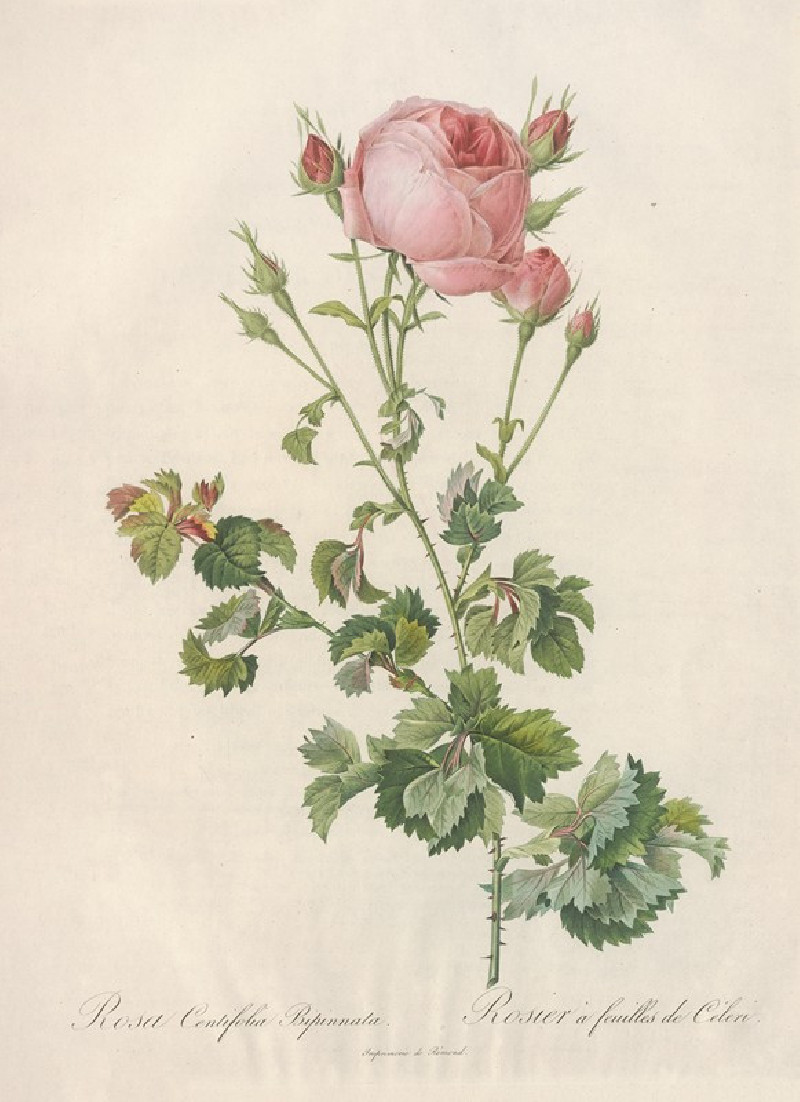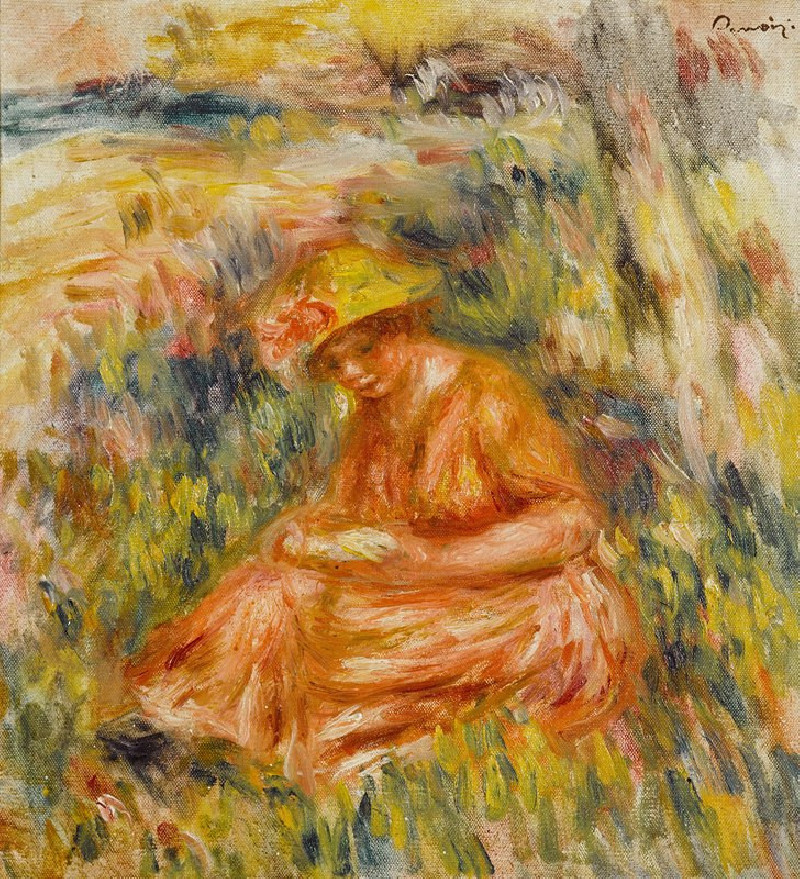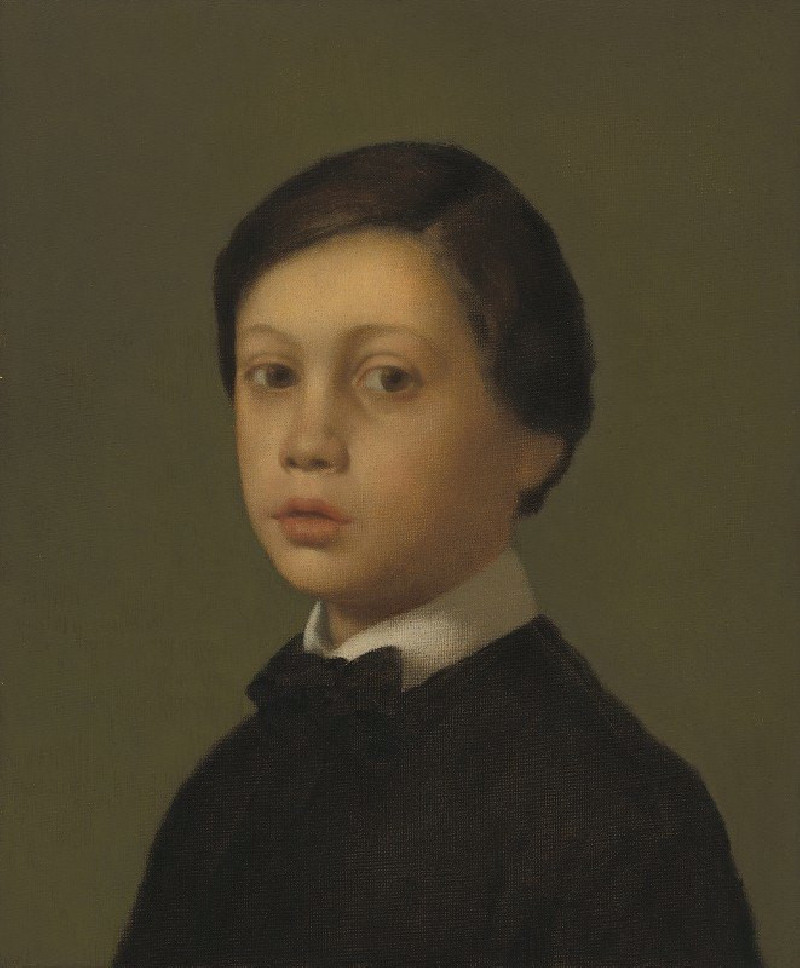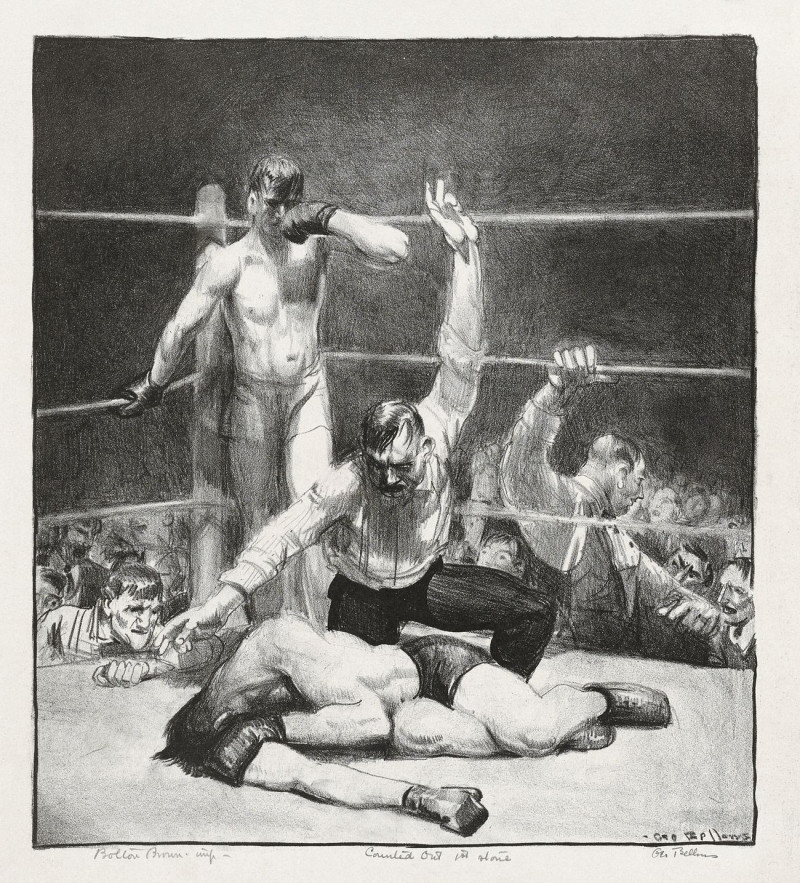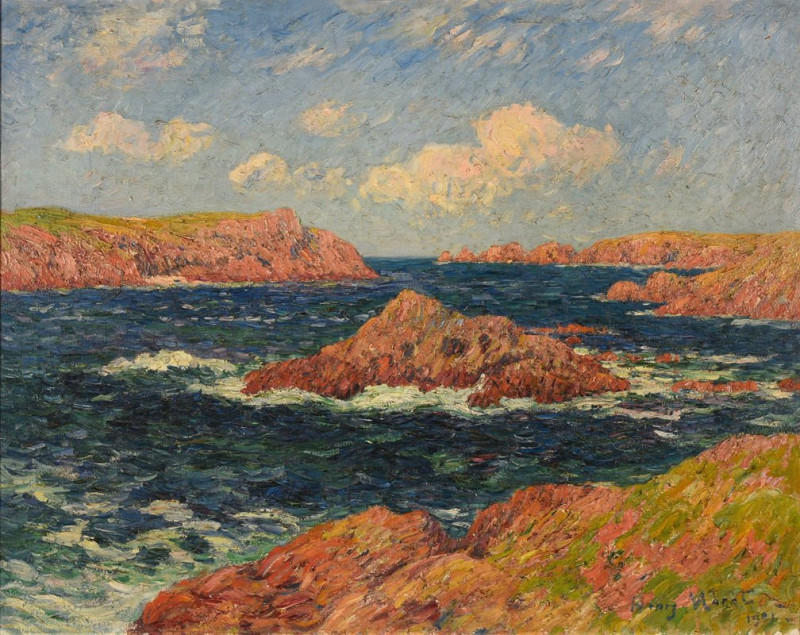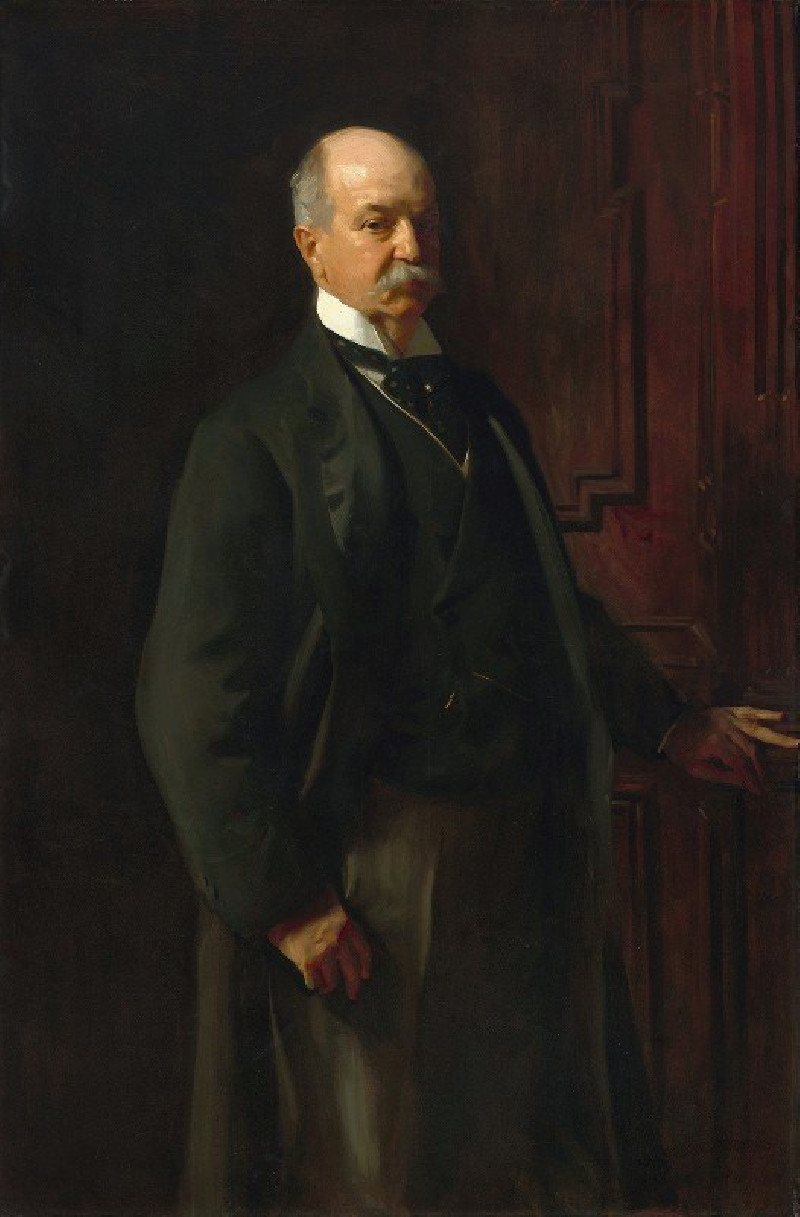Peasants On Their Way To Rome
Technique: Giclée quality print
Recommended by our customers
More about this artwork
This painting, titled "Peasants On Their Way To Rome" by Wilhelm Marstrand, captures a vibrant and detailed scene of rural life as it might have been perceived during the artist's time. The composition unfolds in a lively pastoral setting, showing peasants as they journey towards Rome, evoking a sense of movement and purpose.In the foreground, a group of peasants and animals move along a dusty road. One of the central figures is a woman riding a mule, wearing a wide-brimmed hat and holding a small child in her lap, which adds a tender element to the scene. Another woman, walking beside the mule, carries a large bundle on her head, highlighting the theme of travel and burden.To the left, there is an architectural structure, possibly a barn or a rural depot, overrun by nature, illustrating the coexistence of man-made structures with the environment. This building, with its large, open gateway and overgrown foliage, frames one side of the scene, adding a rustic charm.Surrounding this group are various animals, including sheep and a pig, which contribute to the rural atmosphere and emphasize the agrarian lifestyle of the characters. Each figure, whether human or animal, is depicted with careful attention to detail, suggesting their individual roles and the motion of the journey.The background extends into a softly painted landscape, depicting rolling hills and distant structures, possibly indicating the expansive journey that lies ahead.
Delivery
Returns
Depiction of middle-class family scenes and historical paintings by Danish Golden Age artist Wilhelm Marstrand (1810-1873). Marstrand was known for his depiction of middle-class family scenes and historical paintings, with a focus on genre painting and literary subjects. He was also a skilled portraitist, often commissioned by European families to create portraits. After spending time in Italy, Marstrand began to incorporate humorous and ironic elements into his narrative paintings and illustrations, offering a unique perspective on Italian folk life.


